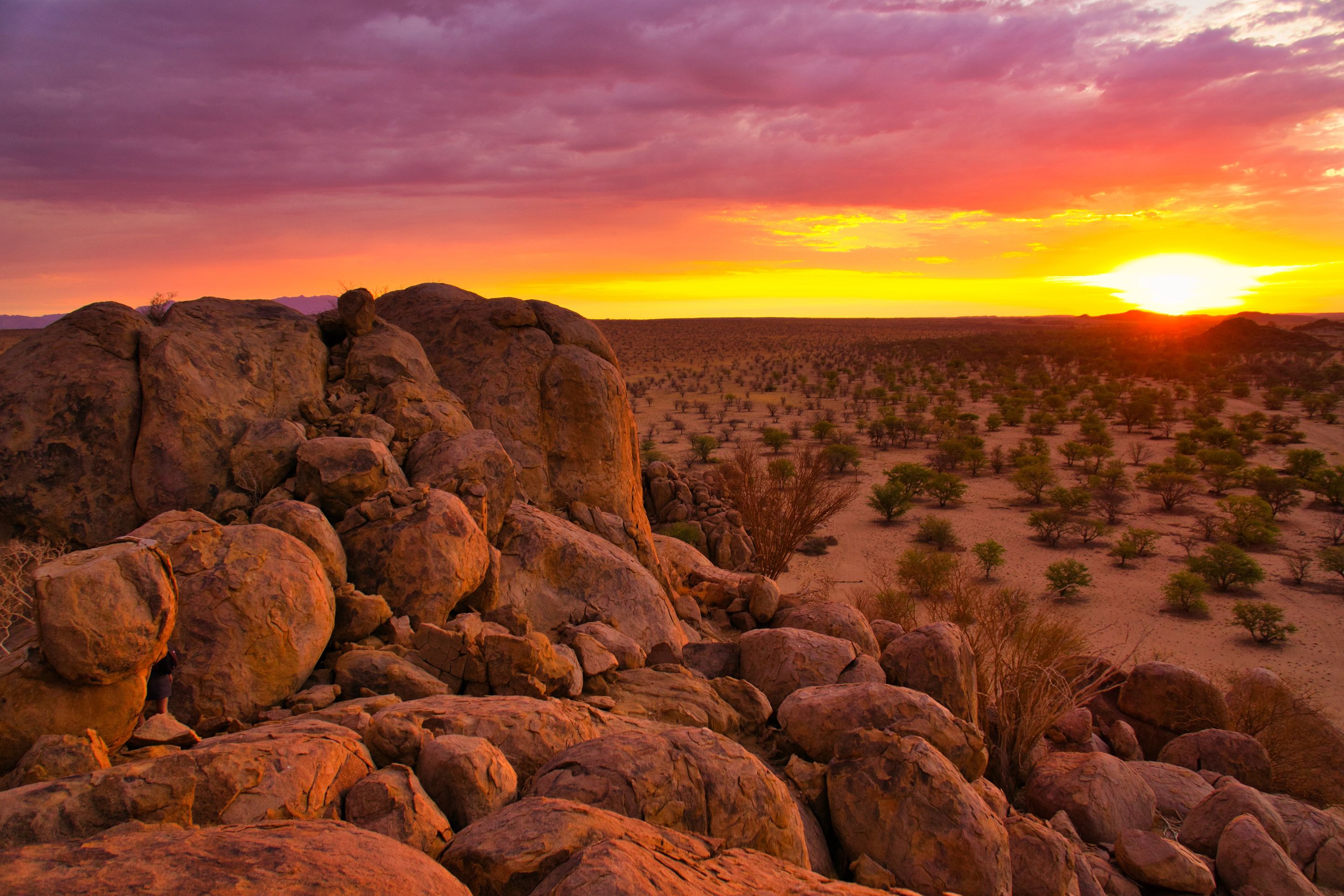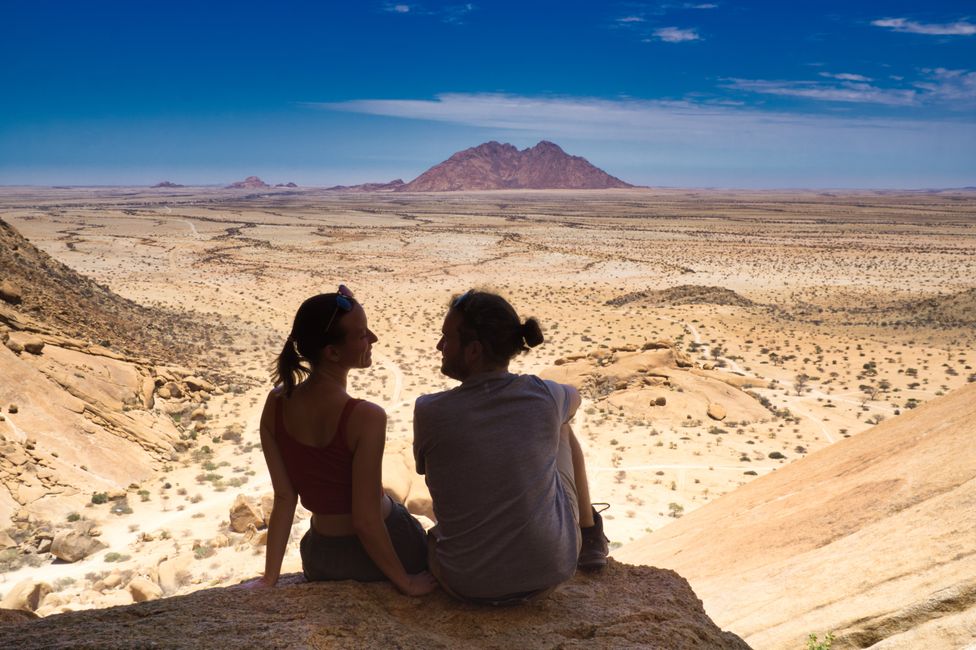Northern Cape
प्रकाशित: 02.01.2022
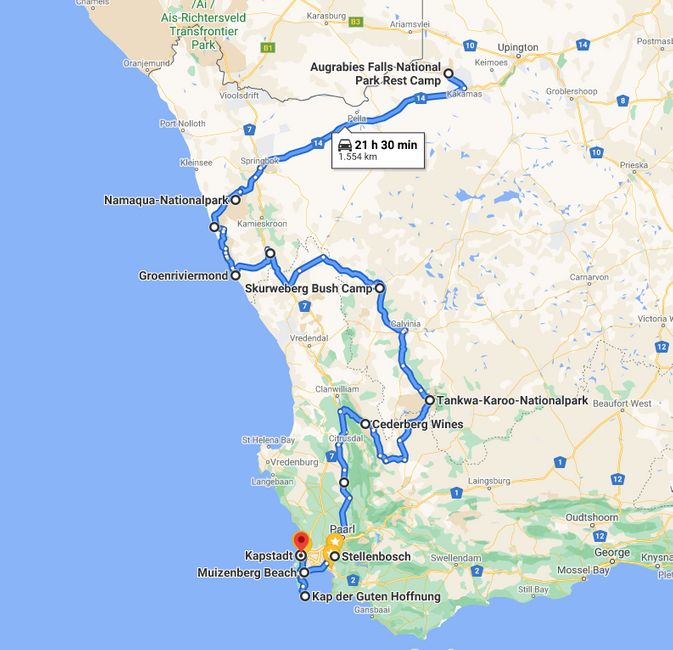
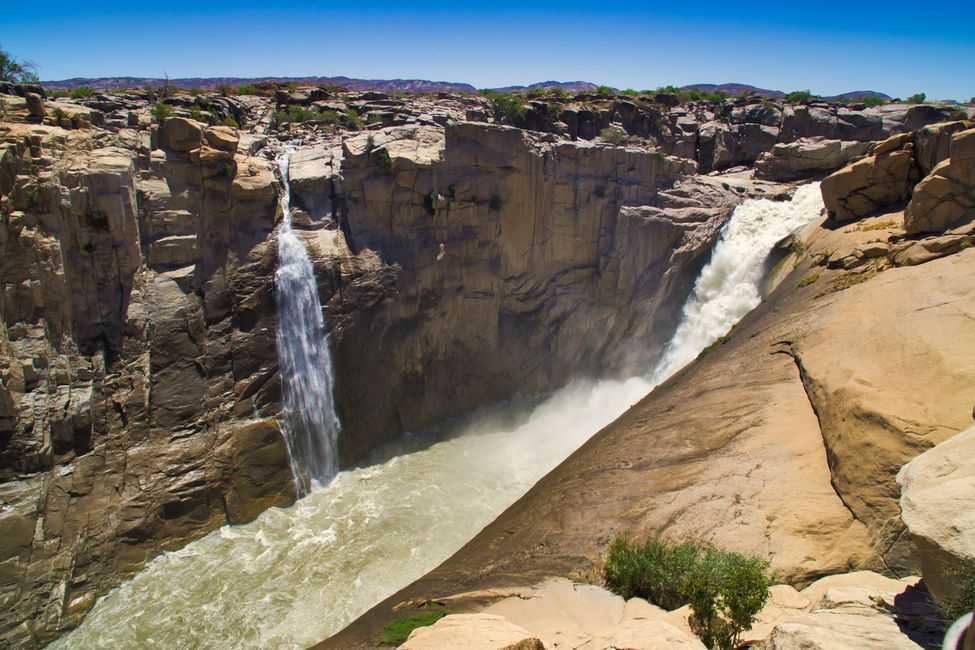
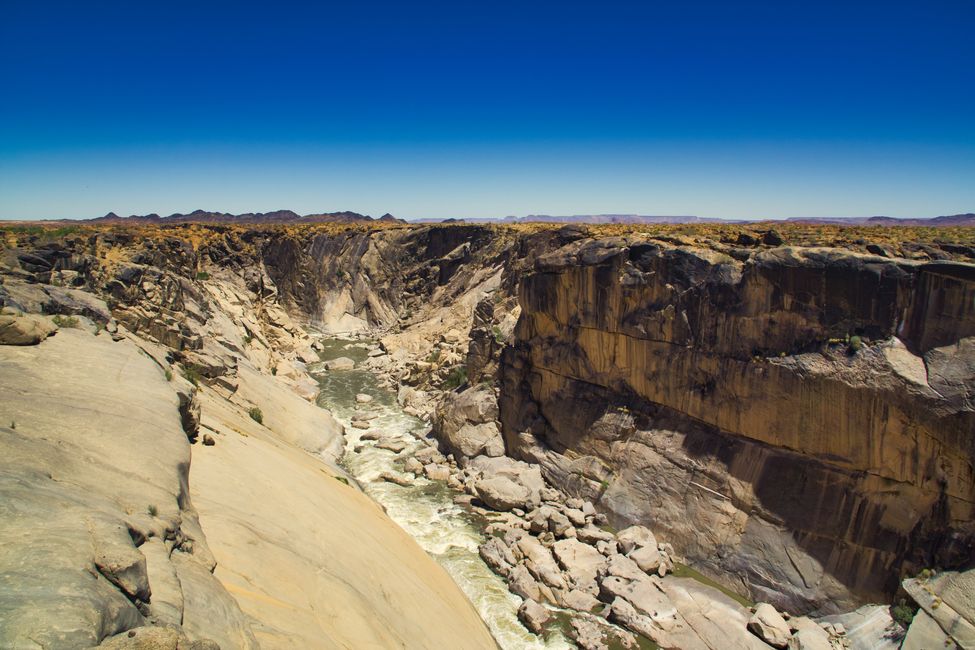
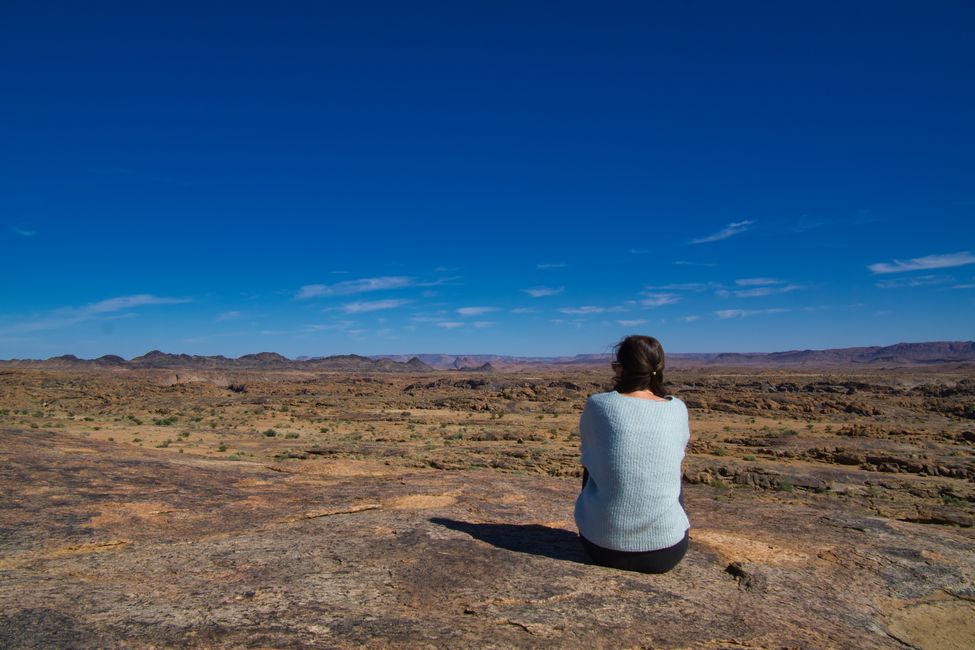
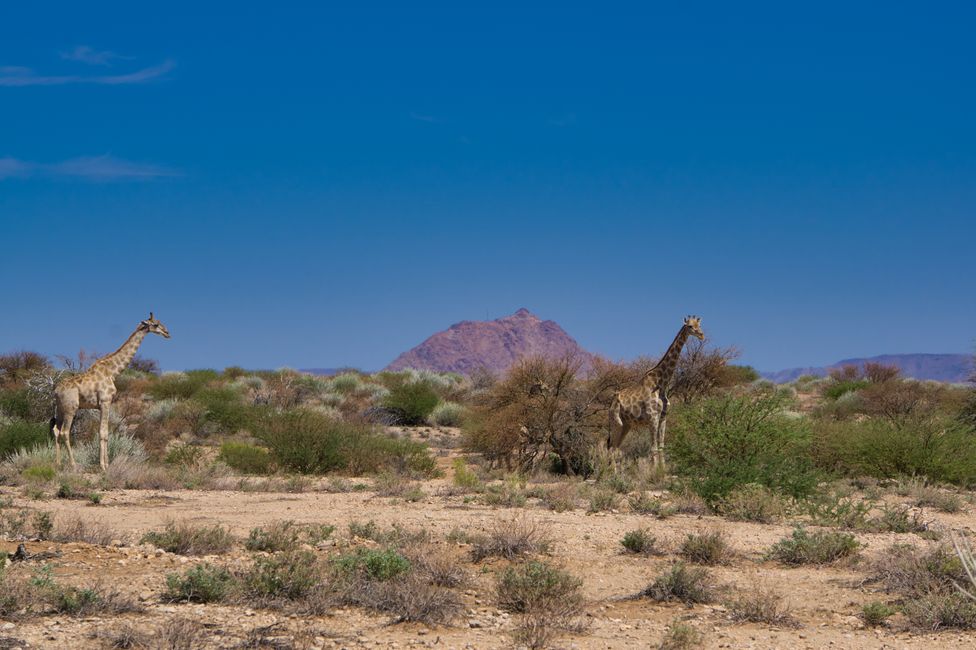
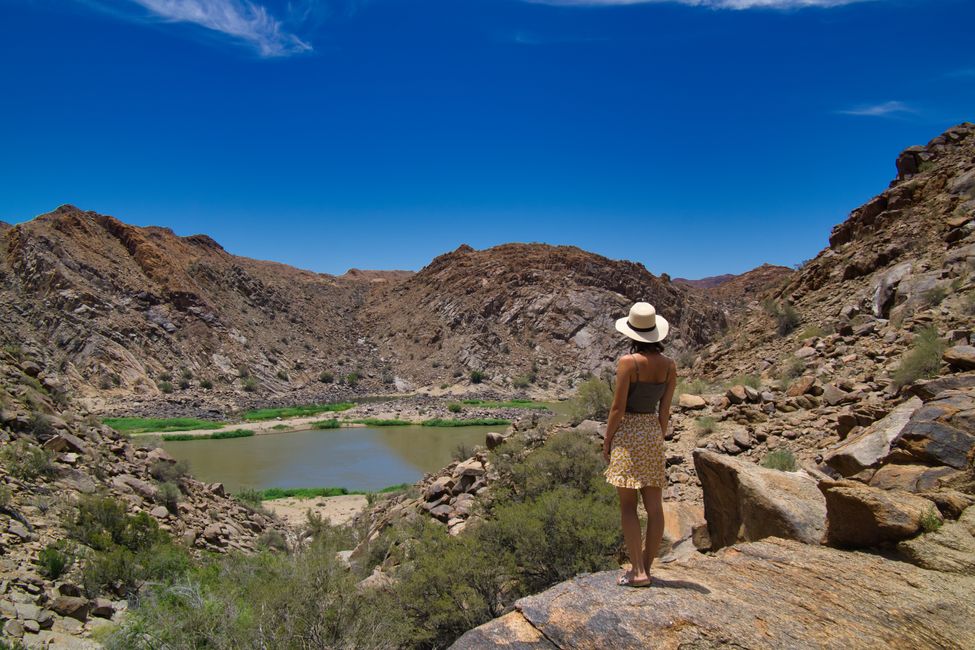
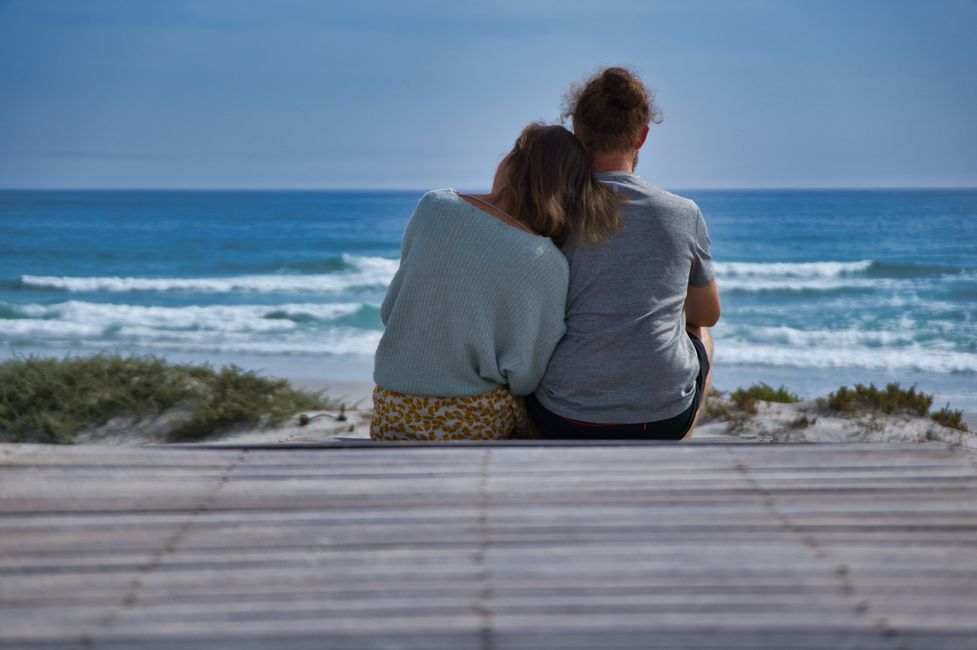
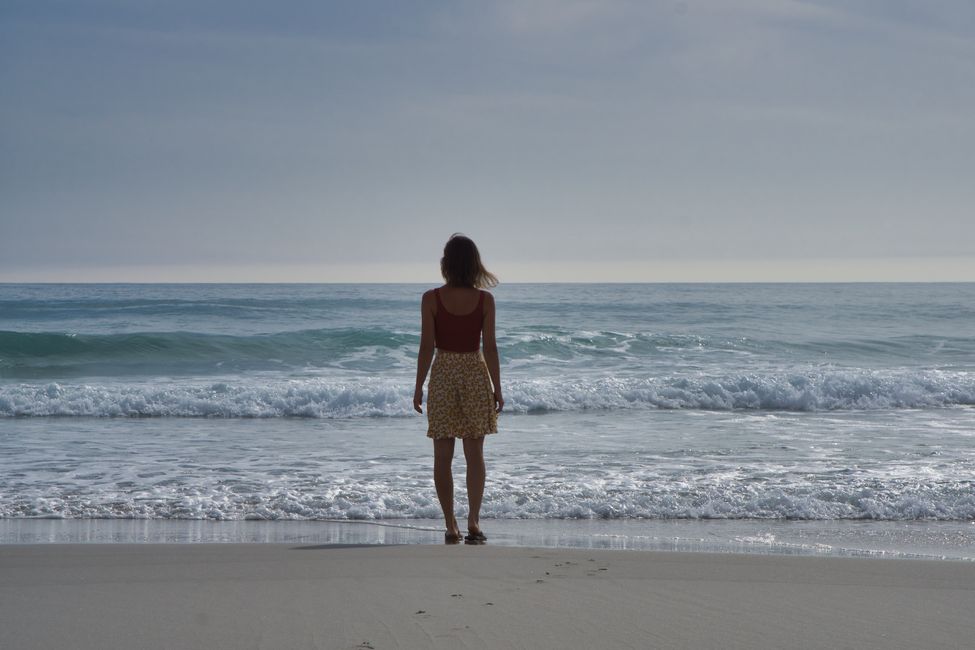
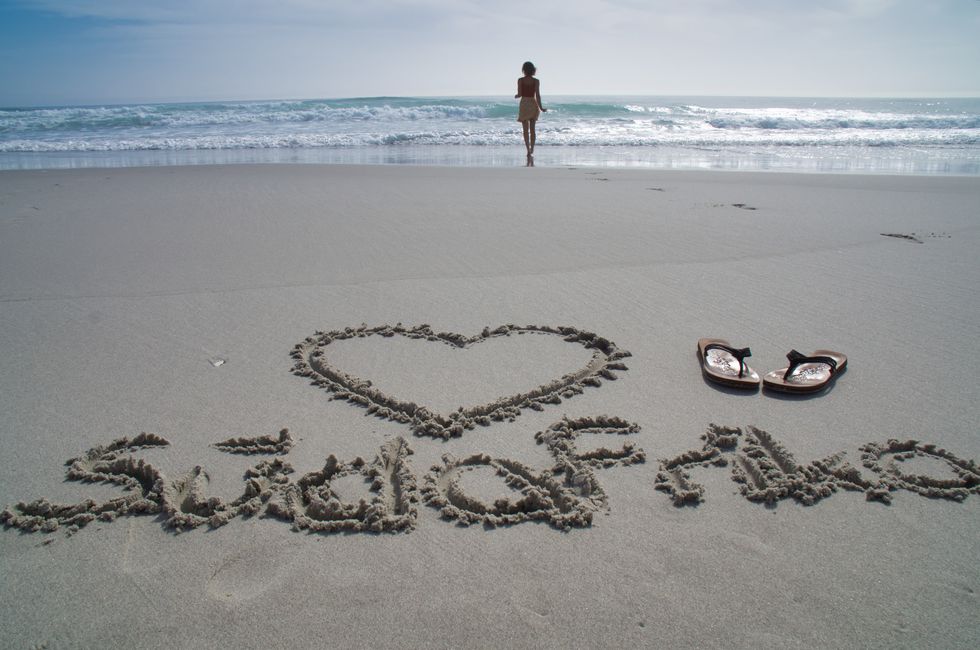
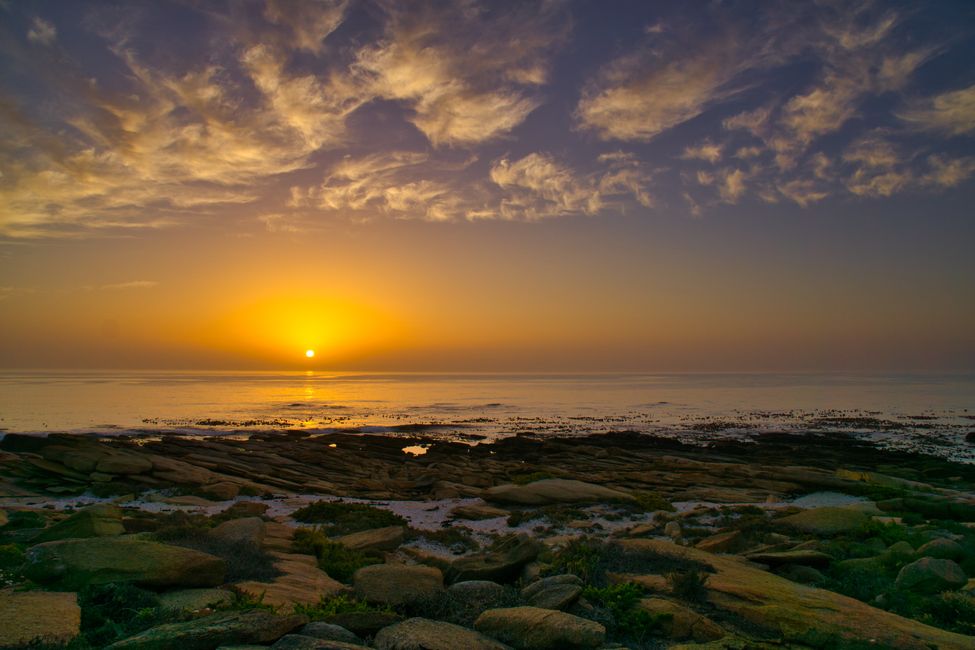
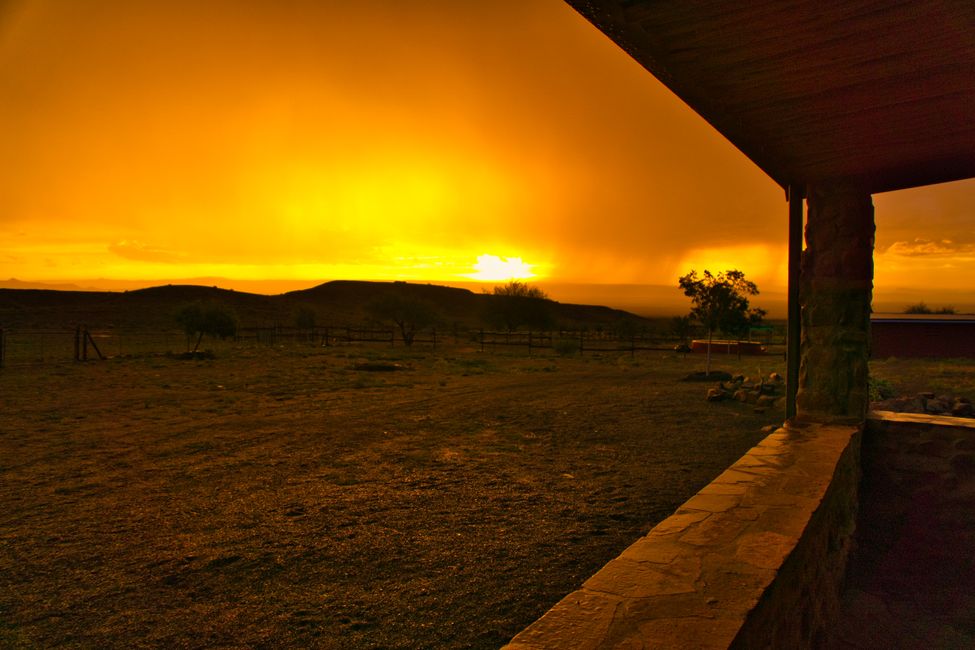
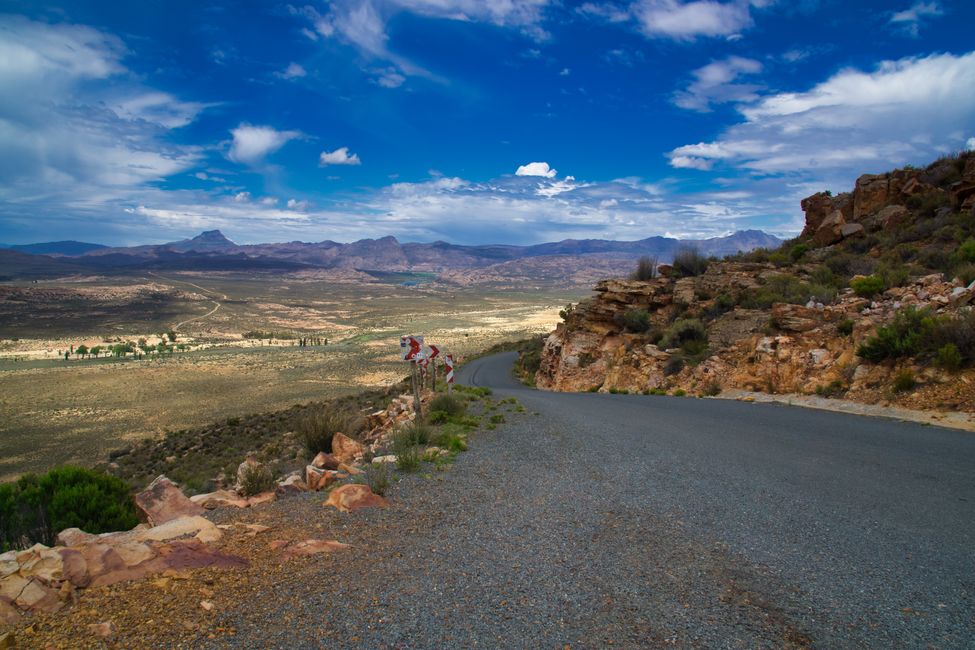
समाचारपत्रस्य सदस्यतां गृहाण
Augrabies Falls National Park
First stop of our road trip through South Africa: the Augrabies Falls, which plunge up to 56 meters into the depths before winding their way through a deep rock gorge eroded by the Orange River for 18 kilometers. Upon arrival at the national park surrounding the waterfalls, you can already hear the roar of the water masses cascading down the gorge. Our campsite is not far away and much larger than we are used to from Namibia. Most of the about hundred spots are not occupied, but there are barbecue sites and trees next to which you usually set up your tent. After getting the obligatory groceries, a South African SIM card, and diesel for Hixi - our loving nickname for the Toyota Hilux - we are optimally equipped for the last two weeks that will take us from the northernmost part to Augrabies all the way down to the southernmost part by the Cape.
At the reception of the campsite, we are directly informed about all poisonous snakes, scorpions, and spiders that we should stay away from. Either the danger is greater here, or unlike the parks in Namibia, the park management actually cares that nothing happens to us. On the first day, we only discover a few cute rock hyraxes - marmot-like rodents -, a monkey, and something that looks like a striped marten at night. As we prepare our first Braai in South Africa to celebrate the day, we discover a few backpackers a few spots away who we had already seen during our canoe trip on the Orange River. It's a small world after all! We have actually noticed that the saying, "you always meet twice in life," applies surprisingly often here. This also makes it easier to say goodbye to beloved people, as you can almost be sure to meet them somewhere here again. In addition to the actual waterfalls, the national park offers a huge park area that can be explored by car - if it is suitable for 4x4. We see giraffes, antelopes, oryx, and of course breathtaking landscapes and views down into the gorge. As the summer holidays begin in South Africa one week before Christmas, the camping sites become busier in the following days, so we escape somewhat towards the south to the less touristy region of the Northern Cape.The Namaqua National Park stretches from the hilly landscape inland to the coast. In August and September, after the winter rains, the gray to brown land is covered with a carpet of millions of blooming plants. Unfortunately, we don't see this sight in December anymore, but we can still imagine it as we drive through the huge park by car. Arriving at the coast, the road turns into a sandy track, so we have to deflate the tire pressure to about 0.6 bar in order to drive on it without getting stuck in the deep sand. Arriving at the coast, you will be rewarded with empty sandy beaches and private campsites right by the sea. Falling asleep with the open rooftop tent window and waking up in the middle of nowhere to the sound of the sea is something very special.
On the border with the Western Cape inland is the Tankwa Karoo National Park. The national park is located in one of the driest areas of the Succulent Karoo with only 80 mm of annual rainfall. However, this small amount is enough to cover some parts of the park with a carpet of blooming succulents in spring, similar to the Namaqua National Park. For us, the only thing left is the view of the vast mountain landscapes, because not much is blooming here in December either.
Upon arriving at our small campsite in the mountains, we are surprised by a thunderstorm. The clouds have been moving gray above us all day and now completely cover the sky. While we are cooking early - to at least be able to eat something despite the approaching rain - a sandstorm suddenly arises, which envelops everything within a few meters in yellow-gray veils. We just manage to save the food and ourselves into the car and close the doors behind us when we are already shaken by the incredible force of the storm along with the car. It almost feels like Hixi is about to tip over, but she remains steadfast and we are safe. However, our rooftop tent is quite crushed by the wind, so that after a few minutes, it looks like the metal poles are about to break. So back out into the storm, close our eyes to the sand, and try to fold up the rooftop tent as quickly as possible. The outer poles have already been blown away by the storm, but the tent itself seems to be intact. Unfortunately, the same cannot be said for our camping neighbor, who is still on a bird watching tour. His tent hangs a hundred meters away on a fence post and does not look so good anymore. Together with the farm owner, we pull the tent - which swells like a huge sail in the wind and is not that easy to control - into a shed. Since the sandstorm was only the beginning of a nasty thunderstorm, we are allowed to spend the evening in one of the standalone cottages on the farm. A few hours later, the black sky clears up, so that we can rebuild our fortunately intact rooftop tent under the radiant shades of the setting sun. What an evening...Cederberg
To the west of the Tankwa Karoo National Park, the Cederberg Mountains join, which we will visit next. At the same time, it is already our last stop before Christmas and therefore the last night in the rooftop tent until the next leg of the road trip in mid-March when we want to head towards the Garden Route.
The Cederberg Mountains are a mountain range made of Table Mountain sandstone, located 200 km north of Cape Town, so not far from one of the southernmost points in Africa! The drive into the mountains takes us over mountain passes with insanely beautiful views into the valleys until we finally reach our campsite by a river. Here, the high season of the summer holidays is noticeable, as the tents are lined up one after the other. Unlike the locals in Namibia, the South Africans love camping, so we are almost the only foreign tourists on a fully booked campsite. Goodbye peace and the peaceful vastness of the lonely landscapes, now comes the Western Cape!
समाचारपत्रस्य सदस्यतां गृहाण
उत्तरम्
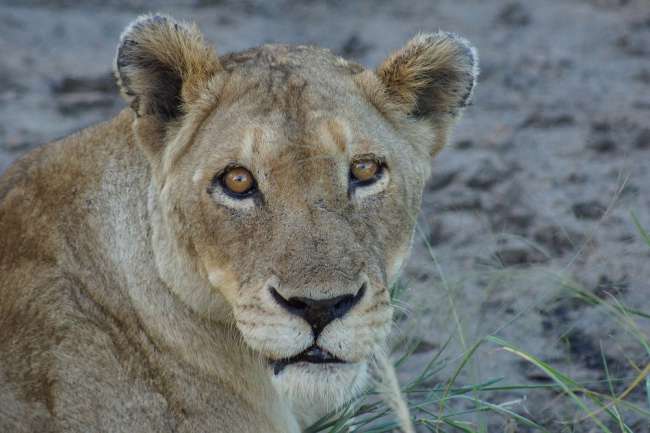
यात्राप्रतिवेदनानि दक्षिण आफ्रिका
